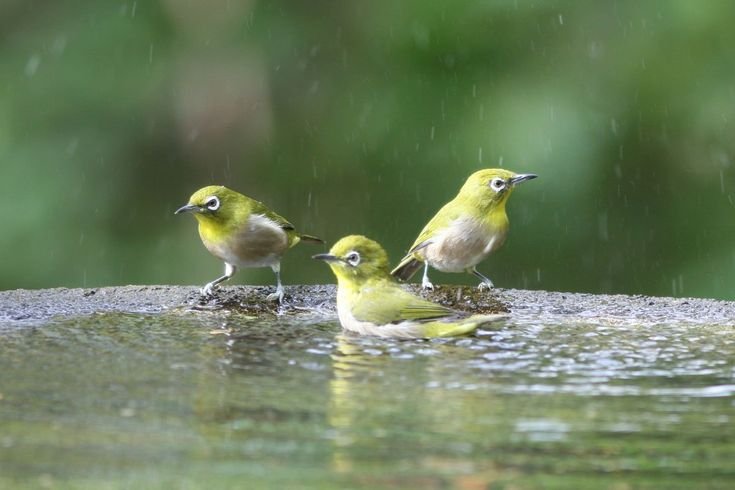As the summer sun rises high in the sky, the world becomes a furnace of heat and dryness. For many creatures, including humans, this season can be challenging to endure. However, amidst the scorching temperatures and arid landscapes, there exists a resilient class of beings that not only survive but thrive – birds.
Birds are remarkable creatures that have evolved various adaptations to cope with the rigors of summer. From physiological changes to behavioral strategies, they have developed ingenious ways to thrive in the heat. Let’s take a closer look at how birds survive the summer months:
1. Physiological Adaptations:
a. Thermoregulation: One of the primary challenges birds face in summer is maintaining their body temperature within a narrow range. To combat overheating, birds employ several tactics. They may pant, similar to dogs, to cool themselves by evaporating moisture from their respiratory system. Additionally, birds may adjust their metabolic rate, seeking shade during the hottest parts of the day to conserve energy.
b. Feathers: The plumage of birds serves as more than just an aesthetic feature. Feathers provide insulation, protecting birds from both heat and cold. During summer, birds molt, shedding old feathers and growing new ones. This process not only ensures they have fresh plumage but also allows for better airflow, preventing overheating.
2. Behavioral Strategies:
a. Nocturnal Activity: Many birds alter their activity patterns during summer, becoming more active during the cooler hours of dawn and dusk. Nocturnal foraging allows them to avoid the scorching midday heat, reducing the risk of dehydration and heat stress.
b. Seeking Shade and Water Sources: Like humans, birds seek shelter from the sun’s rays. Trees, bushes, and even man-made structures provide much-needed shade where birds can rest and cool down. Additionally, access to water is vital for birds during summer. Whether it’s a natural pond, birdbath, or even a dripping faucet, water sources are essential for hydration and bathing, helping birds regulate their body temperature.
3. Migration and Habitat Selection:
a. Migration: For some bird species, migration is a critical strategy for coping with summer conditions. Birds that breed in temperate regions may migrate to cooler areas during summer, following seasonal changes in temperature and food availability. By traveling to more hospitable environments, these birds ensure their survival and reproductive success.
b. Habitat Selection: Birds are highly adaptable and may select specific habitats that offer relief from the summer heat. Riparian zones, wetlands, and coastal areas provide cooler microclimates and abundant food resources, making them attractive destinations for birds seeking refuge from the summer sun.
4. Diet and Feeding Behavior:
a. Feeding on Fruits and Insects: Summer brings an abundance of food sources for birds. Many species take advantage of the increased insect activity and fruit ripening during this season. Insectivorous birds feast on insects, replenishing their energy reserves, while frugivorous birds indulge in juicy fruits, which not only provide nourishment but also help them stay hydrated.
b. Opportunistic Feeding: Birds are opportunistic feeders, adapting their diet based on seasonal changes. During summer, when food resources are plentiful, birds may exhibit more diverse feeding behaviors, exploiting a wide range of food sources to meet their nutritional needs.
In conclusion, birds have evolved a suite of adaptations and behaviors that enable them to survive and thrive in the harsh conditions of summer. From physiological mechanisms like thermoregulation and molting to behavioral strategies such as seeking shade and altering activity patterns, birds employ a diverse array of tactics to endure the heat and continue their life cycles. As we marvel at their resilience and resourcefulness, let us also remember the importance of preserving their habitats and ensuring their well-being in an ever-changing world.

